I’m Michael Zhang, a Chinese travel expert with extensive international travel experience. I’m passionate about exploring historical landmarks and cultural treasures around the world. On my journeys, I immerse myself in breathtaking landscapes while delving into the history and human stories behind each destination. In this article, I’ll take you on a tour of the Sun Yat-sen Mausoleum, a landmark that combines revolutionary history with architectural elegance. I hope my insights enhance your travel experience.
Summary
Introduction to Sun Yat-sen Mausoleum
The Sun Yat-sen Mausoleum is the resting place of Dr. Sun Yat-sen, the pioneer of China’s democratic revolution. Built in 1926, this monumental site spans approximately 80,000 square meters, nestled in the southern foothills of Purple Mountain in Nanjing. Its majestic layout aligns perfectly with the mountain’s contours, exuding grandeur and symmetry.
The mausoleum’s central axis connects key architectural elements, including the archway, pathway, memorial gate, pavilion, sacrificial hall, and burial chamber, stretching 700 meters with an elevation difference of 70 meters. Visitors ascend 392 steps, divided by 10 platforms, leading to the heart of this site. Constructed with white granite and reinforced concrete, and adorned with blue-glazed tiles, the mausoleum is hailed as “the first mausoleum in the history of modern Chinese architecture.” It is also a 5A-rated tourist attraction in China.
- Address: North side of Zijinshan Road, Purple Mountain Scenic Area, Nanjing, Jiangsu Province
- Opening Hours: 8:00 AM – 5:00 PM; closed every Monday for maintenance (except during public holidays and on Dr. Sun Yat-sen’s birth and death anniversaries). The burial chamber is open Tuesday to Friday (excluding public holidays).
- Recommended Visit Duration: 3–4 hours
- Best Seasons to Visit: All year round
- Admission: Free, but reservations are required.
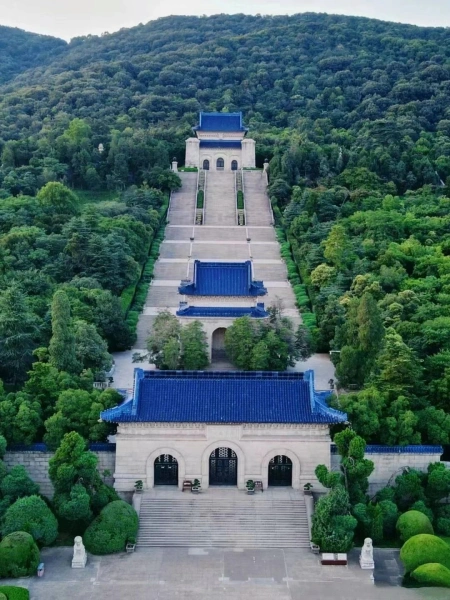
Why You Should Visit Sun Yat-sen Mausoleum
Profound Historical and Cultural Significance
The Sun Yat-sen Mausoleum commemorates Dr. Sun Yat-sen, revered as the “Father of the Nation.” His revolutionary ideas and actions profoundly shaped modern Chinese history. Construction of the mausoleum began in 1926 and took several years, officially completing in 1931. The design reflects a unique blend of traditional Chinese architectural elements and Western techniques, marking it as a significant historical monument in modern China.
Unique Architectural Style and Artistic Value
Designed by the renowned architect Lu Yanzhi, the Sun Yat-sen Mausoleum merges Eastern and Western architectural aesthetics. The symmetrical layout and imposing structures convey a sense of solemnity and elegance. Key structures include the Memorial Gate, the Sacred Path, and the Memorial Hall. Inside the Memorial Hall, visitors can view valuable relics and historical documents that vividly illustrate Dr. Sun’s revolutionary ideals and contributions.
Things to Do at Sun Yat-sen Mausoleum
Main Attractions
The Square
The Square is the first stop on your journey through the Sun Yat-sen Mausoleum. This expansive area is both solemn and beautifully designed, surrounded by lush greenery that creates a tranquil atmosphere. From here, visitors can enjoy a stunning view of the entire mausoleum’s layout. It’s also an ideal spot to capture panoramic photos and begin your exploration of this historic site.
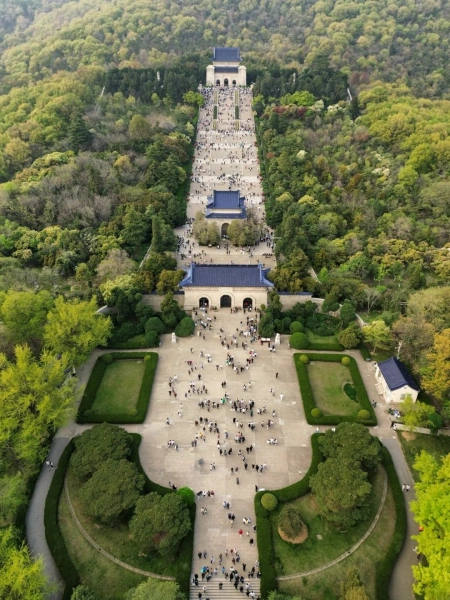
Bo’ai Archway (Arch of Universal Love)
As one of the mausoleum’s most iconic structures, the Bo’ai Archway features a roof covered in blue-glazed tiles, symbolizing peace and unity. The archway’s front is inscribed with the Chinese characters for “Universal Love,” written by Dr. Sun Yat-sen himself, reflecting his philosophy of compassion and equality. This symbolic gateway is the first step in experiencing the revolutionary spirit of Dr. Sun Yat-sen.
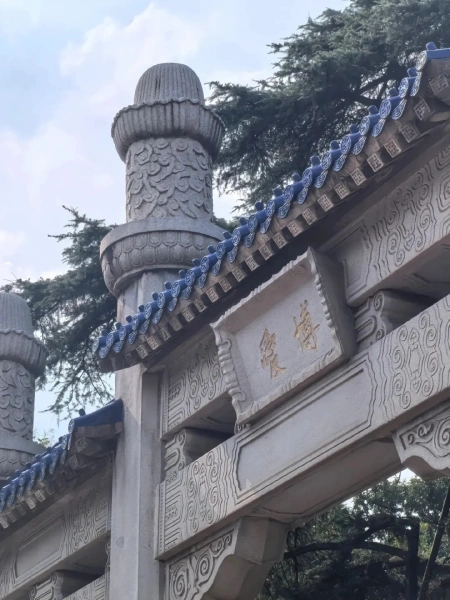
The Stone Steps
Connecting the Bo’ai Archway to the Sacrificial Hall are 392 stone steps, a key feature of the Sun Yat-sen Mausoleum. These steps symbolize progress and determination, guiding visitors toward the pinnacle of revolutionary ideals. As you ascend, you’ll admire the symmetrical design and enjoy the refreshing natural surroundings provided by the lush greenery on either side of the pathway.
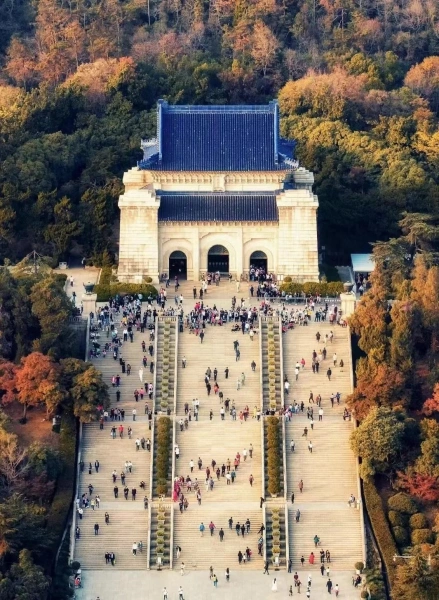
The Sacrificial Hall
At the heart of the mausoleum lies the Sacrificial Hall, a stunning blend of traditional and modern architectural styles. Inside, visitors will find a seated statue of Dr. Sun Yat-sen, along with inscriptions of his revolutionary ideals on the walls. This hall serves as both a memorial and an educational space, offering profound insights into the life and vision of one of China’s greatest leaders.
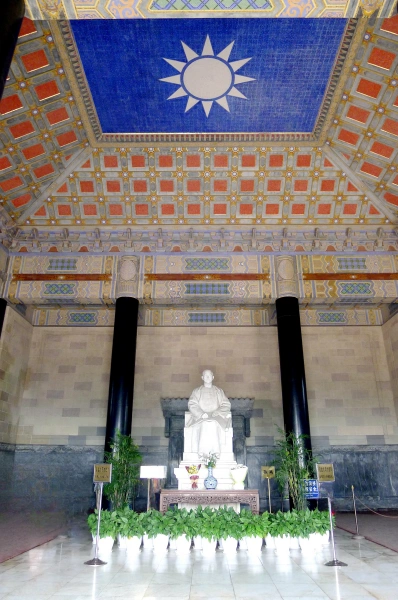
The Burial Chamber
Located behind the Sacrificial Hall, the burial chamber houses the remains of Dr. Sun Yat-sen. The chamber’s interior is simple yet solemn, featuring a bronze coffin as a mark of great respect. Stepping into this sacred space, visitors often feel a deep sense of reverence and admiration. This chamber represents the culmination of the Sun Yat-sen Mausoleum experience, leaving a lasting impression on all who visit.
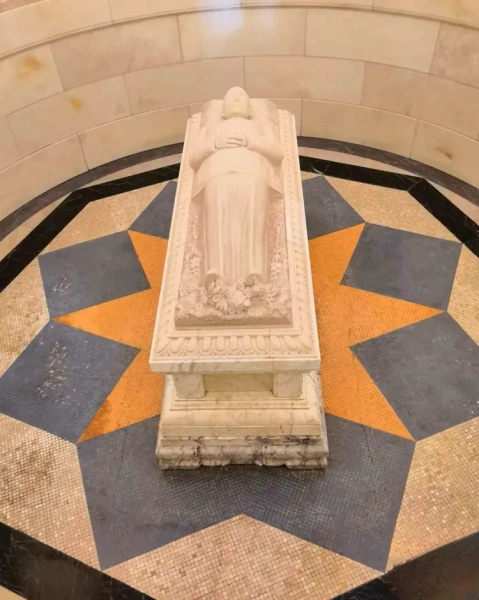
Sun Yat-sen Mausoleum Ticket Information
Admission to the Sun Yat-sen Mausoleum is free, but reservations are required.
- Opening Hours: 8:00 AM to 5:00 PM. Closed on Mondays for maintenance (except during public holidays and on Dr. Sun Yat-sen’s birth and death anniversaries). The burial chamber is open Tuesday to Friday (excluding public holidays).
- Online Reservations: Book through the official WeChat public account.
- On-Site Reservations: Visitors can scan a QR code available at the entrance to complete the reservation through WeChat. It is strongly recommended to reserve your visit in advance to avoid delays.
Recommended Sun Yat-sen Mausoleum Tour Route
The recommended route for exploring the mausoleum is: Bo’ai Archway ➡️ Memorial Gate ➡️ Stele Pavilion ➡️ Sacrificial Hall ➡️ Burial Chamber. To enrich your experience, consider visiting other nearby attractions within the Purple Mountain Scenic Area, such as the Ming Xiaoling Mausoleum and the Meiling Palace, on the same day.
- Bo’ai Archway: A symbol of Dr. Sun Yat-sen’s compassionate spirit, surrounded by serene pathways lined with towering pine trees.
- Memorial Gate: Featuring a roof of green-glazed tiles, the gate bears the inscription “The World Belongs to the People,” handwritten by Dr. Sun himself.
- Stele Pavilion: This pavilion is inscribed with golden characters commemorating the entombment of Dr. Sun Yat-sen, marking a pivotal moment in modern Chinese history.
- Sacrificial Hall: The central structure of the mausoleum, home to a seated statue of Dr. Sun Yat-sen.
- Burial Chamber: Resting beneath the hall, this chamber houses Dr. Sun Yat-sen’s body in a copper coffin, offering a deeply respectful and solemn atmosphere.
Recommended Restaurants Near Sun Yat-sen Mausoleum
- Halal Xilaishun Beef Noodle Restaurant (Xiaowei Street Branch)
- Address: Opposite Gate 3 of Nanjing University of Science and Technology, Zhongshanmen Avenue
- Average Price: 30 RMB
- Why Visit: Known as the most popular beef noodle shop in Nanjing, this restaurant often has long queues. To enjoy a better experience, try visiting during off-peak hours. While the price is slightly higher, the portions of beef are generous and flavorful.
- Jiudun Beef Noodles (Longfor Zijin MALL Branch)
- Address: Room 114, Building B01, Longfor Zijin Original, 288 Zhongshanmen Avenue
- Average Price: 23 RMB
- Why Visit: This spot offers freshly cooked beef paired with noodles, vermicelli, or rice noodles. The beef is tender, and the broth is aromatic. Don’t miss their famous chopped chili sauce, which is a highlight for spice lovers.
- Xinjiang Hetian Specialty Baked Buns (Zhongding Mingyue Plaza Branch)
- Address: Room 103, Building 7, Zhongding Mingyue Plaza, Zhongshanmen Avenue (near China Merchants Bank, Xiaolingwei Metro Station Exit 1)
- Average Price: 16 RMB
- Why Visit: Enjoy freshly baked buns with authentic Xinjiang flavors. The meat-filled naan bread is especially recommended for its delicious filling and crispy texture.
- Nanjing Impressions (Sun Yat-sen Mausoleum Branch)
- Address: No. 9 Zhongshanmen Avenue (near Sun Yat-sen Mausoleum Scenic Area)
- Average Price: 69 RMB
- Why Visit: Famous for Nanjing-style snacks and dishes, this restaurant offers a slightly sweet flavor profile at reasonable prices. Be sure to try their signature Meiling Congee.
How to Get to Sun Yat-sen Mausoleum from Downtown Nanjing
Metro
The metro is the most convenient way to reach the Sun Yat-sen Mausoleum. Take Metro Line 2 and get off at Muxuyuan Station. From there, it’s about a 15-minute walk to the scenic area entrance. Alternatively, you can take a shuttle bus from the station to the mausoleum entrance, which is both affordable and quick.
Bus
Take either Tourist Line 1 or Bus 202 to the Sun Yat-sen Mausoleum Scenic Area stop. These bus routes connect major transportation hubs in Nanjing, offering frequent services at a low cost. This option is ideal for budget-conscious travelers or those looking to experience local public transportation.
Taxi/Ride-Hailing Services
A taxi or ride-hailing service like Didi is a convenient way to travel directly to the Sun Yat-sen Mausoleum. The journey from downtown Nanjing takes about 30 minutes, with fares ranging from 40 to 50 RMB.
How to Get to Sun Yat-sen Mausoleum from Nanjing Lukou Airport
Metro
Take the S1 Metro Line from Nanjing Lukou Airport to Nanjing South Station, then transfer to Metro Line 3 to Daxinggong Station. Finally, switch to Metro Line 2 and get off at Muxuyuan Station. The total travel time is approximately 1.5 hours, making it a cost-effective option.
Airport Shuttle Bus
Take the airport shuttle bus to Nanjing Railway Station, then transfer to Tourist Line 1 or Bus 202, which goes directly to the Sun Yat-sen Mausoleum Scenic Area. Shuttle buses depart every 30 minutes and are a convenient option for those with large luggage.
Taxi/Ride-Hailing Services
A taxi or ride-hailing service offers the most direct route from Nanjing Lukou Airport to the Sun Yat-sen Mausoleum. The ride takes about an hour, with fares ranging from 100 to 120 RMB. This option is ideal for travelers seeking a comfortable and hassle-free journey.
FAQ
Yes, the Sun Yat-sen Mausoleum is relatively stroller- and wheelchair-friendly. The main paths are wide and flat, and some areas have accessible ramps. However, the Sacrificial Hall and Burial Chamber feature many steps, so careful planning of the route is recommended. Staff assistance is also available if needed.
The mausoleum offers luggage storage services near the main entrance. These facilities are reasonably priced and easy to use, making them ideal for visitors carrying large bags. It’s a good idea to store your belongings before starting your tour to enjoy a lighter and more comfortable experience.

 English (US)
English (US)
 繁體中文
繁體中文 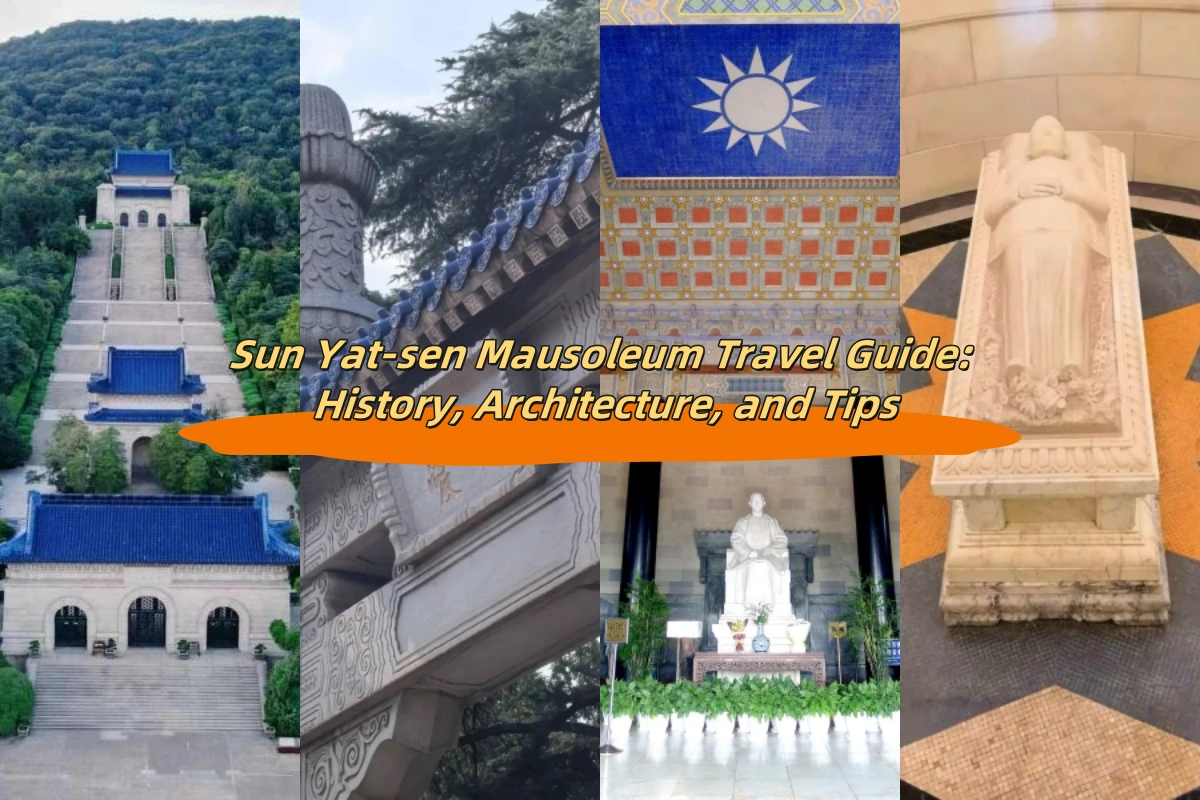
Comment (0)